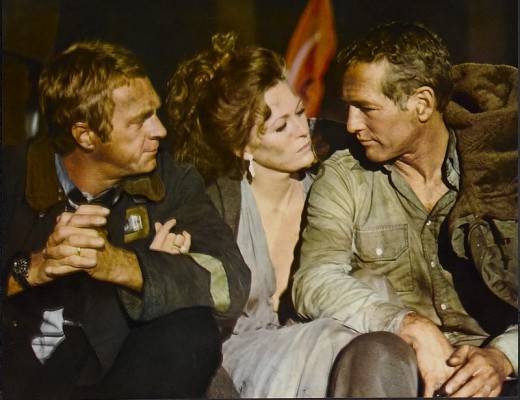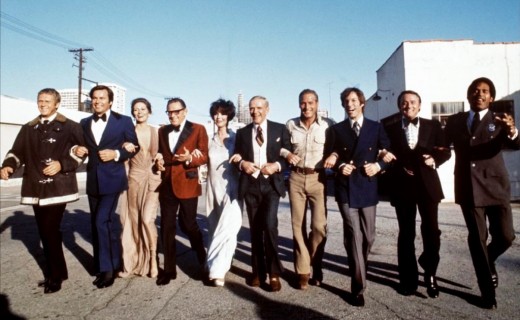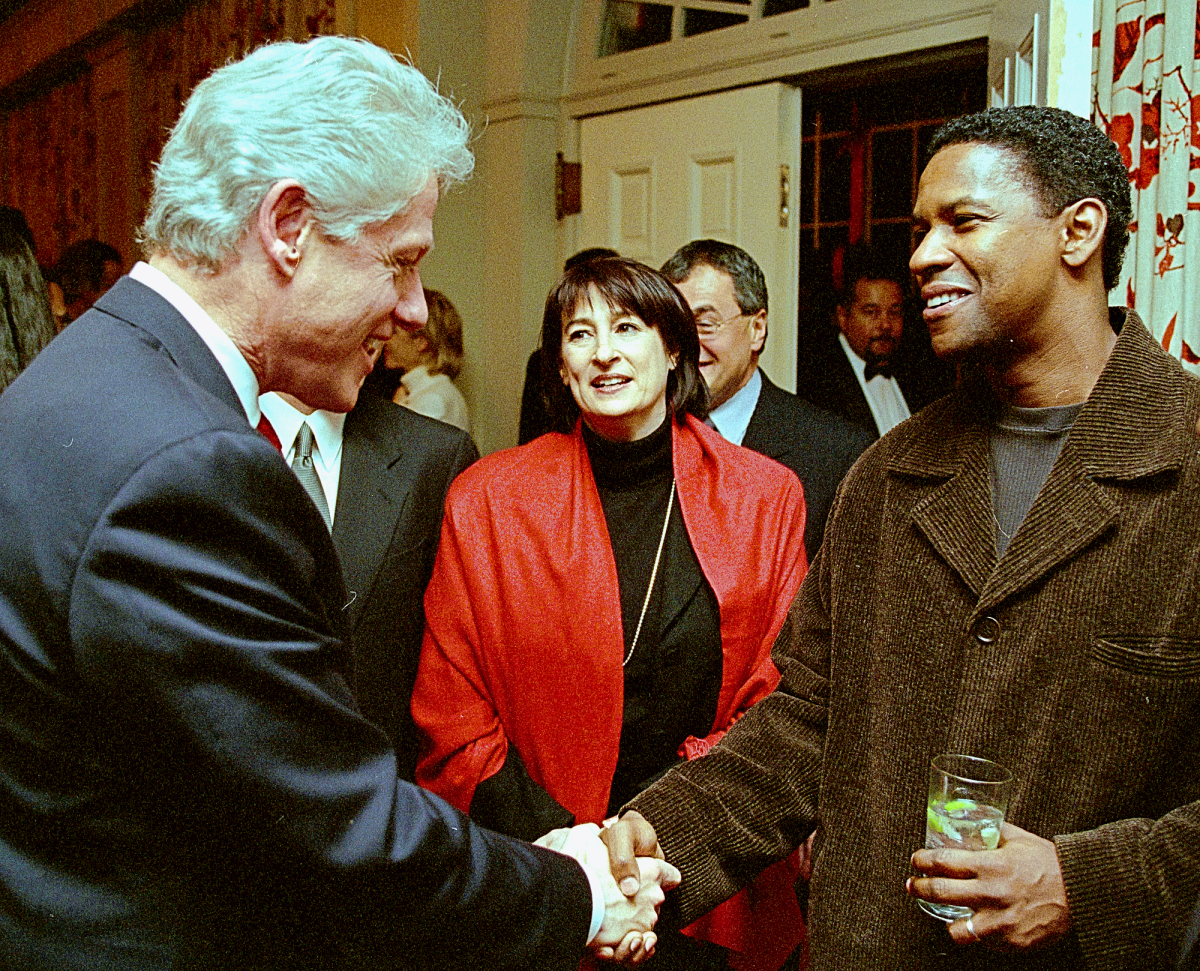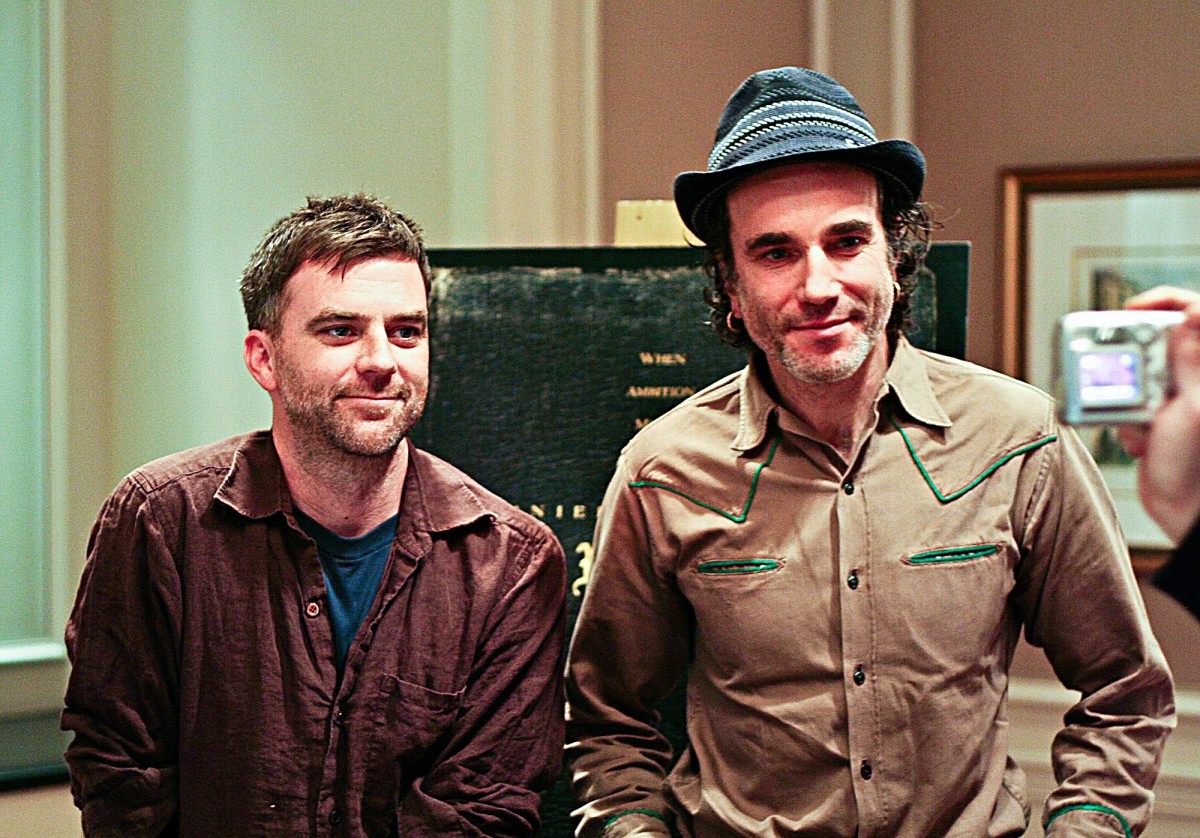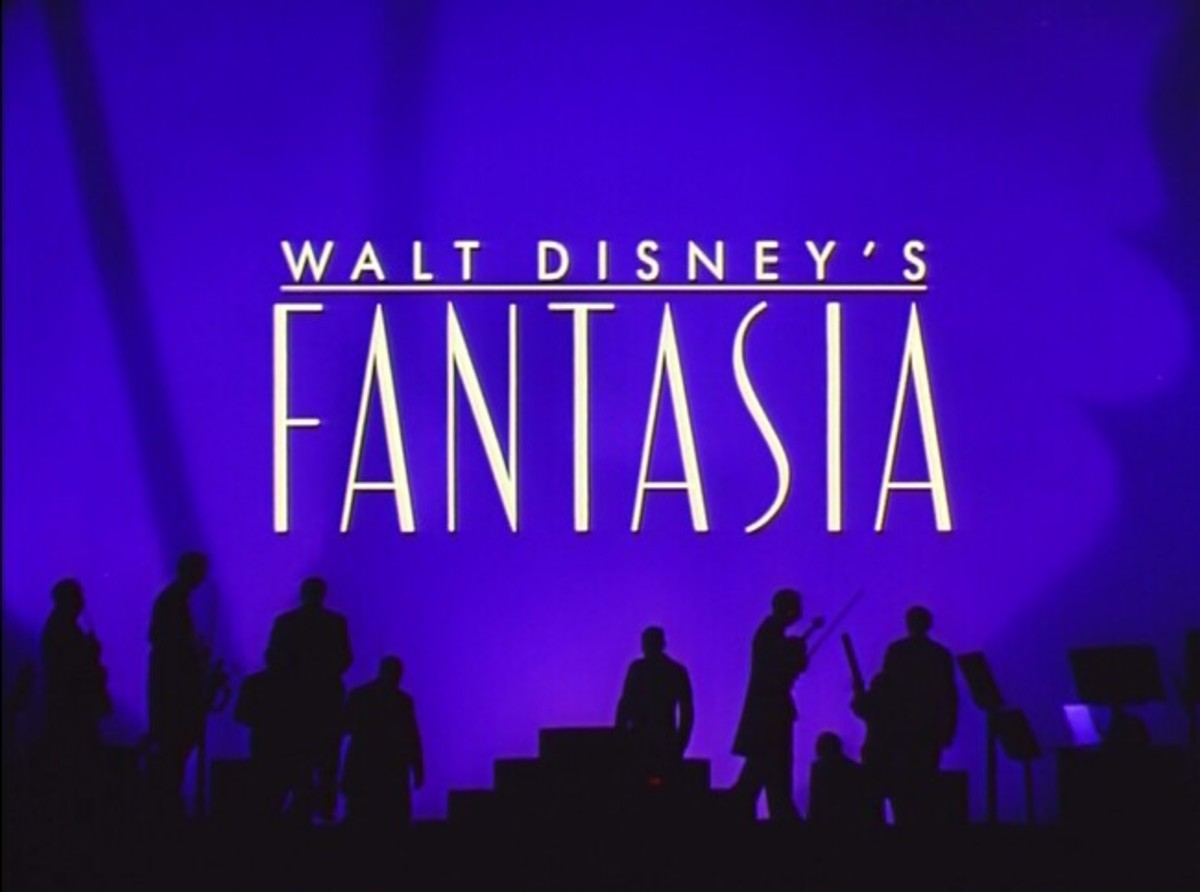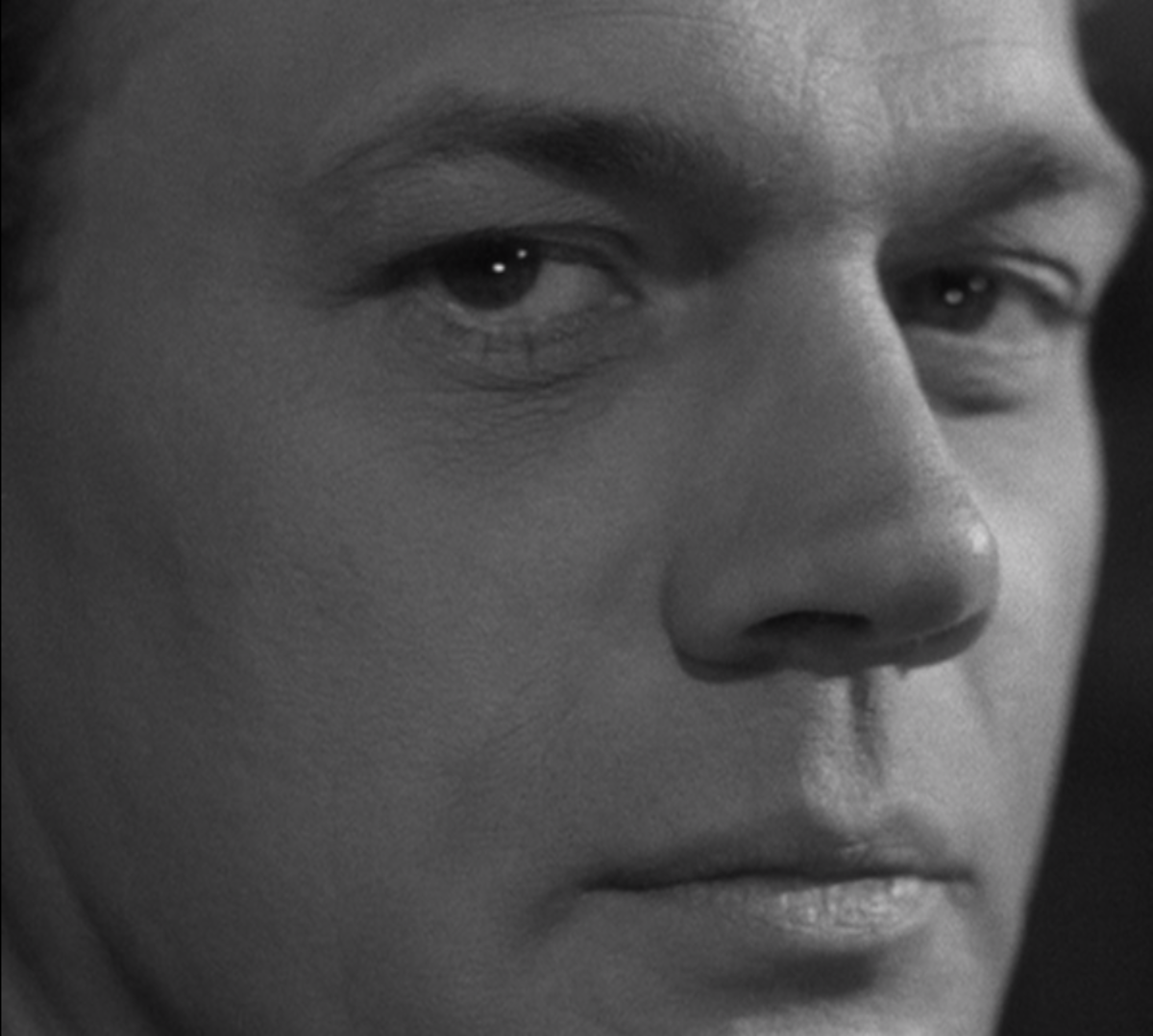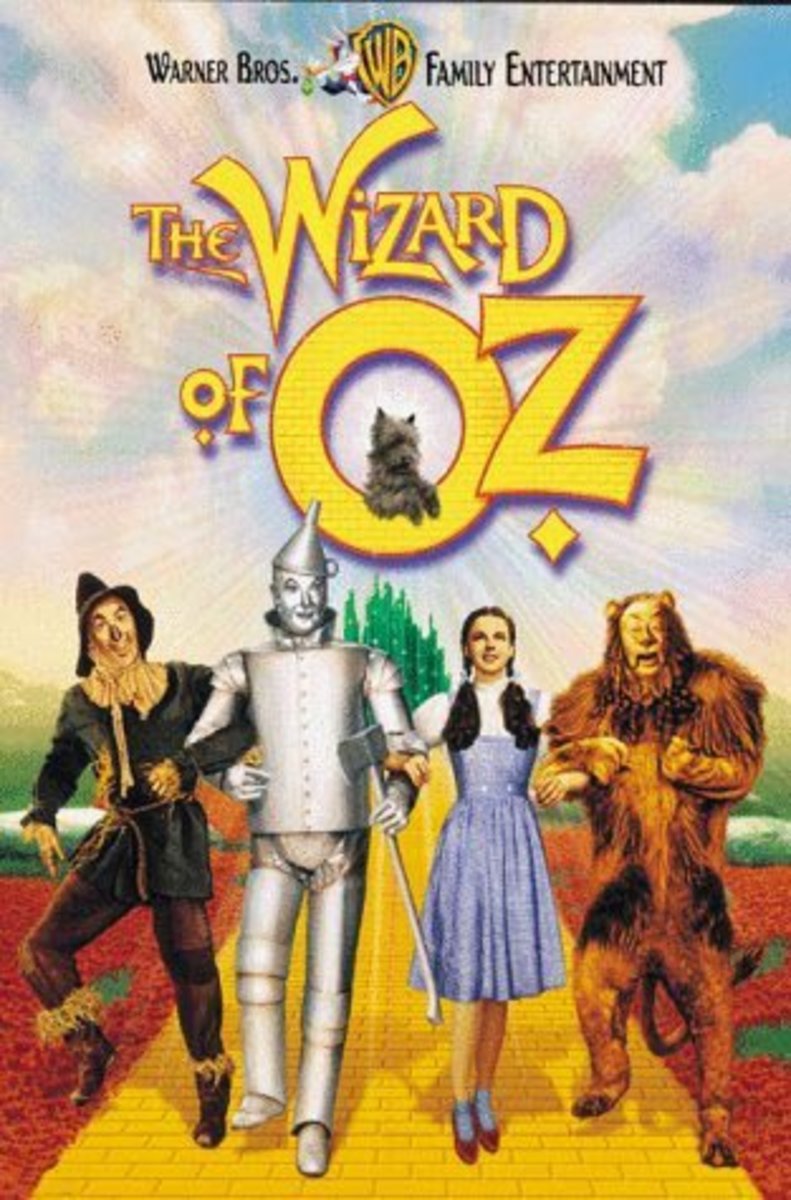The Towering Inferno (1974) - Illustrated Reference
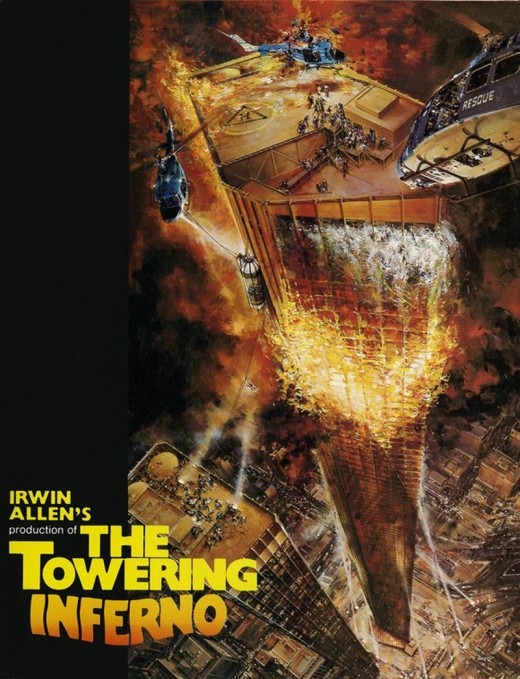
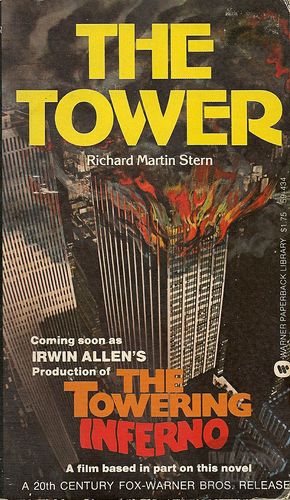
The Towering Inferno was directed by John Guillermin and premiered on 10th December 1974. Starring Paul Newman, Steve McQueen, William Holden, Faye Dunaway, Fred Astaire, Susan Blakely, Richard Chamberlain, Jennifer Jones, O.J. Simpson, Robert Vaughn and Robert Wagner. Screenplay by Stirling Silliphant. Music by John Williams. 165mins.
On the day of its opening dedication ceremony a fire breaks out on the 81st floor of the tallest building in the world, the Glass Tower. 300 VIP guests are partying on the 135th floor.
After the super success of The Poseidon Adventure in 1972 the Hollywood studios were planning more disaster movies. By coincidence both Warner Bros and Twentieth Century Fox wanted to make a film about a burning skyscraper. Warner Bros had paid $390,000 for the rights to the book “The Tower” (1973) by Richard Martin Stern and Fox Studios paid $400,000 for the rights to the book “The Glass Inferno” (1974) by Thomas N. Scortia and Frank M. Robinson.
Rather than have two similar films competing at the box office the two studios, in a rare move, joined forces to make one big expensive movie based on both books. 20th Century Fox would release the film in North America and keep the domestic box office takings while Warner Bros would distribute the film around the world collecting the worldwide receipts for the film.
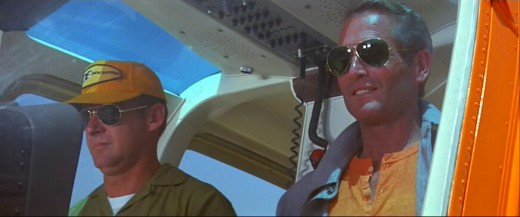
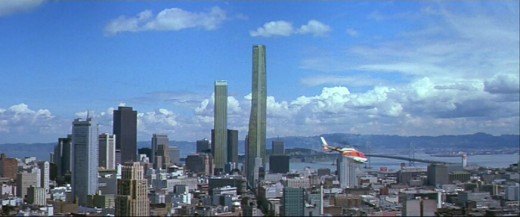
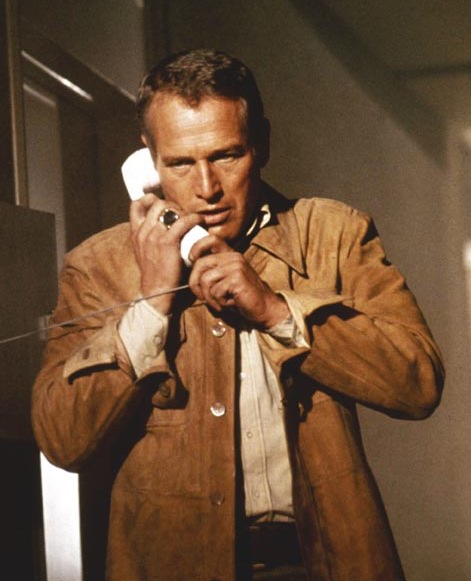
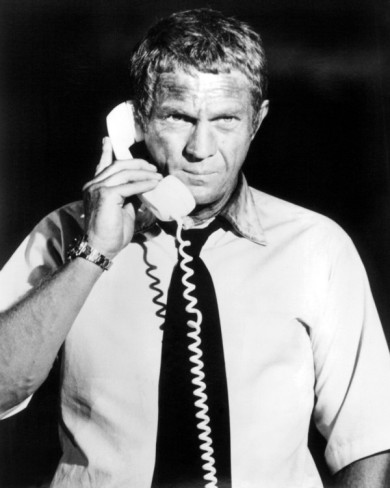
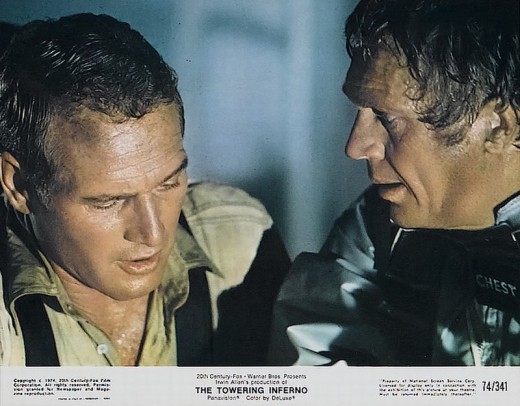
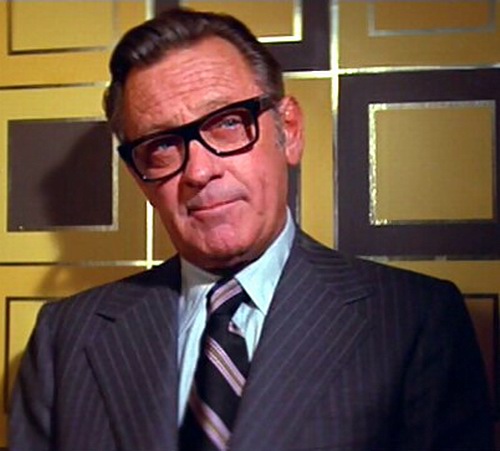
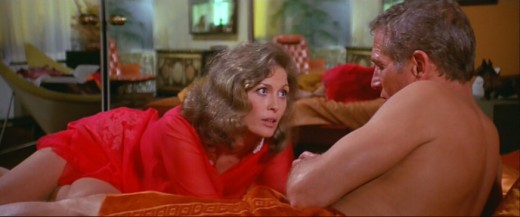

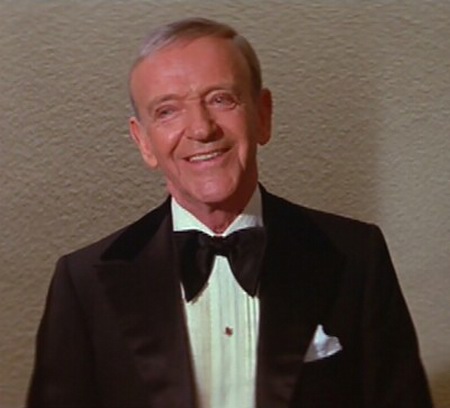
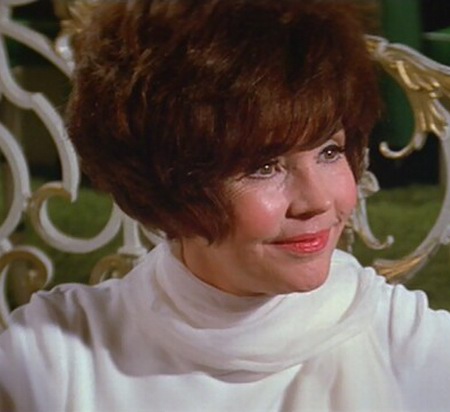
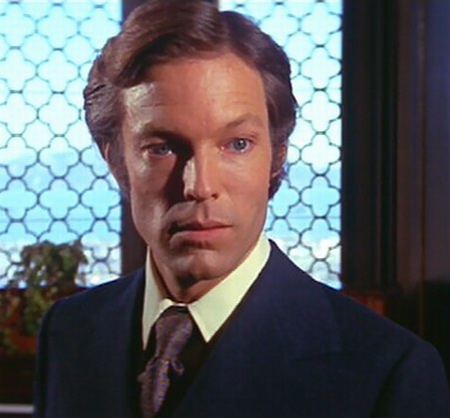
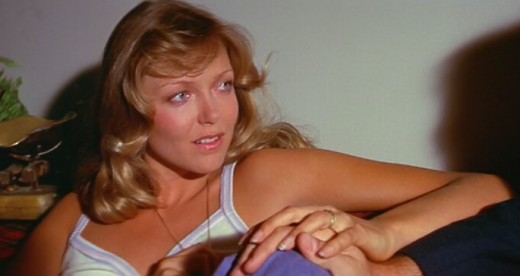
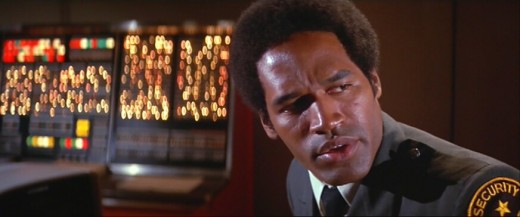
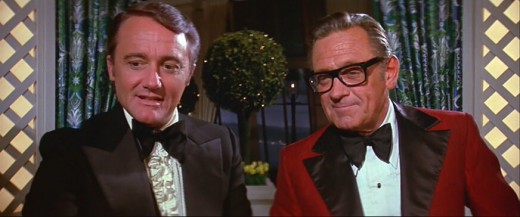
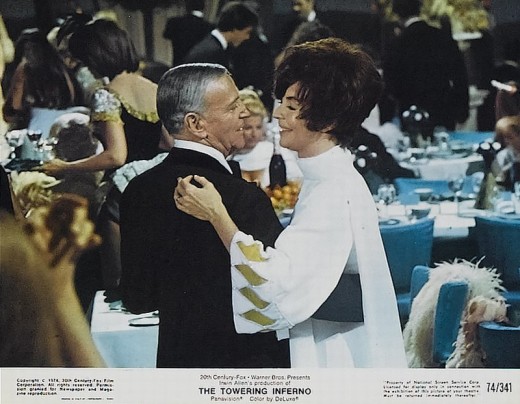
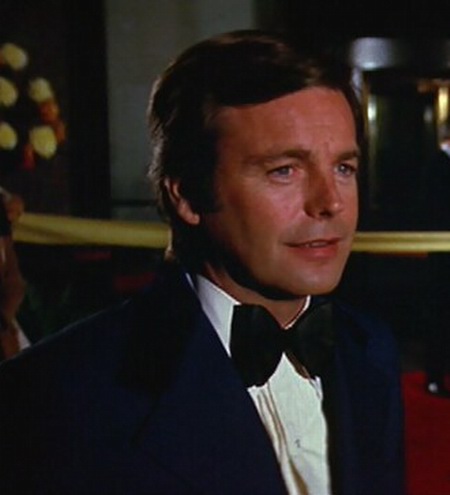
Doug Roberts: I thought we were building something where people could work and live and be safe! If you had to cut costs, why didn't you cut floors instead of corners?
James Duncan: Now listen. Any decisions that were made for the use of alternate building materials were made because I as a builder have a right to make those decisions. If I remained within the building code and god-dammit I did!
Doug Roberts: Building code? Jesus. Building code. Come on, Dunc, Corridors without fire doors in them, sprinklers that won't work, and electrical system that's good for what? I mean it's good for starting fires! Phew, where was I when all this was going on? What do they call it when you kill people?
Paul Newman (1925-2008) / Doug Roberts - The Architect
Born in Shaker Heights, Ohio, Paul Newman won a Best Actor Oscar for The Color of Money (1986) and was also nominated for Cat on a Hot Tin Roof (1958), The Hustler (1961), Hud (1963), Cool Hand Luke (1967), Rachel, Rachel (1968), Absence of Malice (1981), The Verdict (1982), Nobody’s Fool (1994) and Road to Perdition (2002).
Paul Newman received an Honorary Oscar in 1986 - In recognition of his many and memorable and compelling screen performances and for his personal integrity and dedication to his craft.
Steve McQueen (1930-1980) / Chief Mike O’Hallorhan - The Fire Chief
Born in Beech Grove, Indiana, Steve McQueen was Oscar Nominated Best Actor for The Sand Pebbles (1966) and has received Golden Globe nominations for the films Love With a Proper Stranger (1963), The Sand Pebbles (1966), The Reivers (1969) and Papillon (1973). He won Best Actor for The Great Escape (1963) at the Moscow International Film Festival.
William Holden (1918-1981) / James Duncan - The Builder
Born in O’Fallon, Illinois, William Holden won a Best Actor Oscar for Stalag 17 (1953) and received nominations for Sunset Boulevard (1950) and Network (1976).
Faye Dunaway (1941-) / Susan Franklin - The Girlfriend
Born in Bascom, Florida, Faye Dunaway won a Best Actress Oscar for Network (1976) and received nominations for Bonnie and Clyde (1967) and Chinatown (1974).
Fred Astaire (1899-1987) / Harlee Claiborne - The Con Man
Born in Omaha, Nebraska, Hollywood musicals legend Fred Astaire was Oscar Nominated Best Supporting Actor for The Towering Inferno. He won British Academy and Golden Globe Awards for Best Supporting Actor for The Towering Inferno.
Fred Astaire received an Honorary Oscar in 1950 - "For his unique artistry and his contributions to the technique of musical pictures." He received a Lifetime Achievement Award from the American Film Institute in 1981.
Jennifer Jones (1919-2009) / Lisolette Mueller - The Widow
Born in Tulsa, Oklahoma, Jennifer Jones won a Best Actress Oscar for The Song of Bernadette (1943), and received nominations for Since You Went Away (1944), Love Letters (1945), Duel in the Sun (1946) and Love is a Many-Splendored Thing (1955). She was nominated for a Best Supporting Actress Golden Globe for The Towering Inferno.
Richard Chamberlain (1934-) / Roger Simmons - The Son-in-Law
Born in Beverly Hills, Los Angeles, Richard Chamberlain’s films include – Julius Caesar (1970), The Music Lovers (1970), The Three Musketeers (1973), The Four Musketeers (1974), The Slipper and the Rose (1976), The Swarm (1978) and King Solomon’s Mines (1985). Popular in TV movies, mini-series and as Dr. Kildare (1961-1966).
Susan Blakely (1948-) / Patty Simmons - The Wife
Born in Frankfurt, Germany, Susan Blakely’s films include – The Way We Were (1973), Capone (1975), The Concorde – Airport 79 (1979), Over the Top (1987) and My Mom’s a Werewolf (1989).
O.J. Simpson (1947-) / Harry Jernigan - The Security Man
Born in San Francisco, California, O.J. Simpson, a celebrated professional football player, turned actor and currently a convicted criminal. His films include - Klansman (1974), The Cassandra Crossing (1976), Firepower (1979) and The Naked Gun I-II-III (1988-1991-1994).
Robert Vaughn (1932-) / Gary Parker - The Senator
Born in New York City, Robert Vaughn was Oscar nominated Best Supporting Actor for The Young Philadelphians (1959). His films include – Teenage Caveman (1958), The Magnificent Seven (1960), Bullitt (1968), The Bridge at Remagen (1969), Demon Seed (1977 voice of Proteus IV), Battle Beyond the Stars (1980), Superman III (1983) and The Delta Force (1986). Starred as Napoleon Solo in hit TV series The Man from U.N.C.L.E. (1964-1968).
Robert Wagner (1930-) / Dan Bigelow - The Publicity Man
Born in Detroit, Michigan, Robert Wagner’s films include - Titanic (1953), Prince Valiant (1954), Broken Lance (1954), A Kiss Before Dying (1956), The True Story of Jesse James (1957), The Longest Day (1962), The Pink Panther (1963), Winning (1969), Midway (1976), Airport 79 The Concorde (1979), Dragon: The Bruce Lee Story (1993) and Austin Powers I-II-III (1997-1999-2002). TV series – It Takes a Thief (1968-1970) and Hart to Hart (1979-1984).
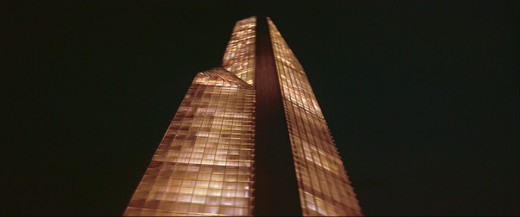
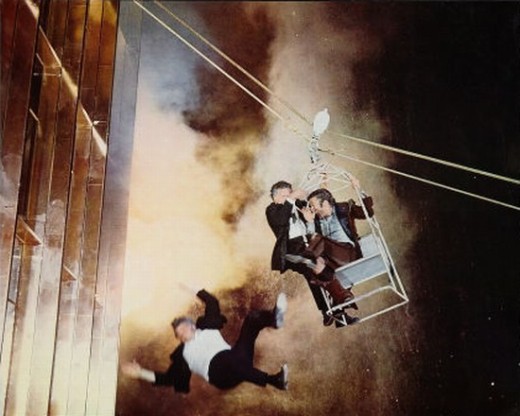
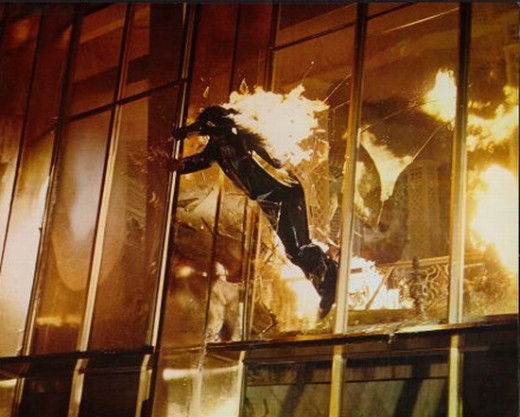
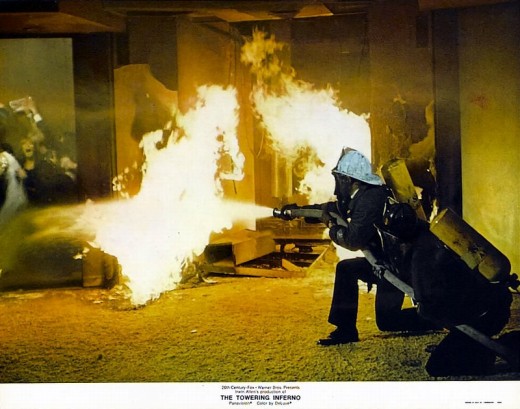
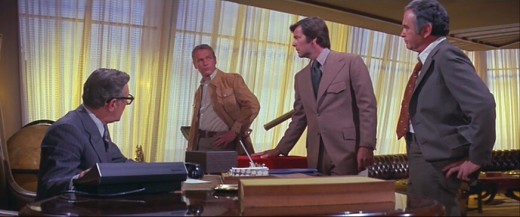
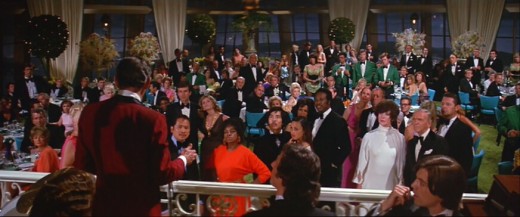
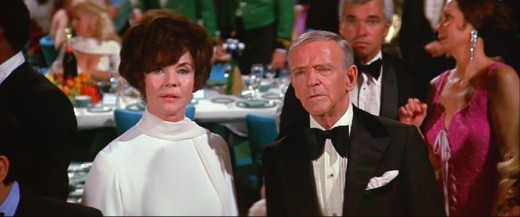
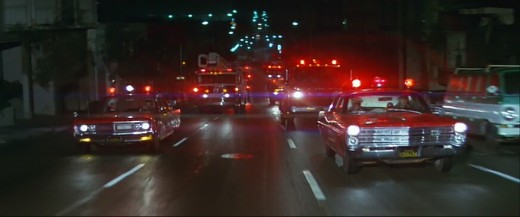
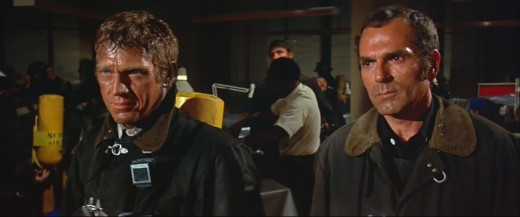
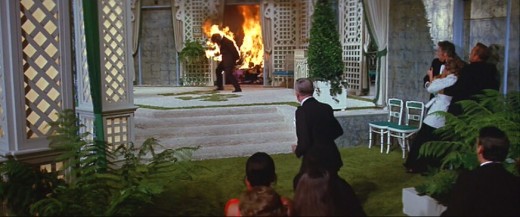
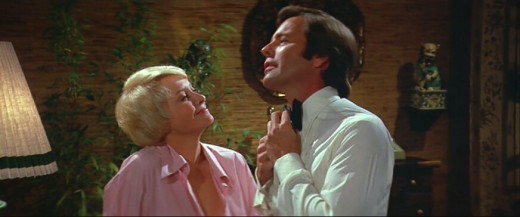
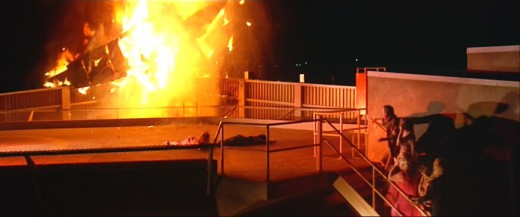
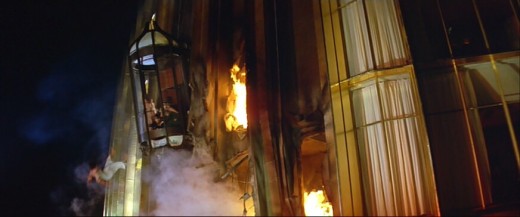
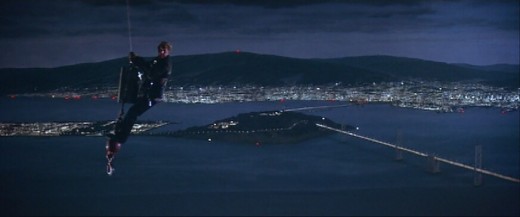
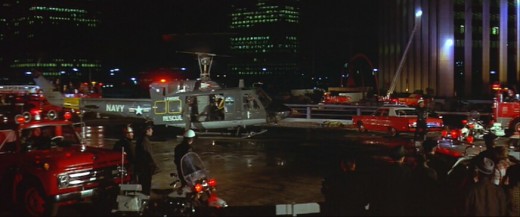
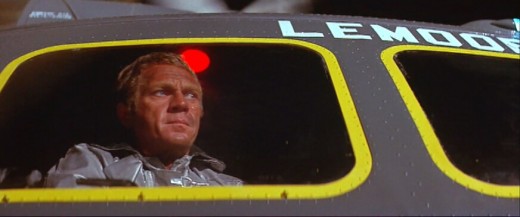
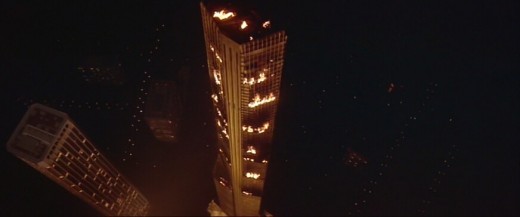
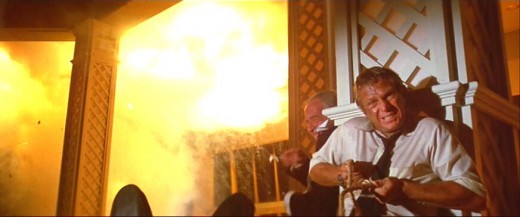
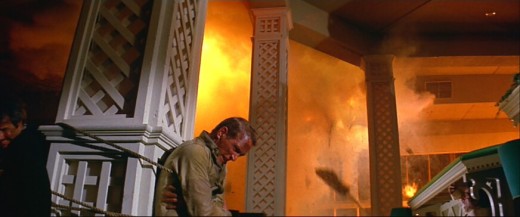
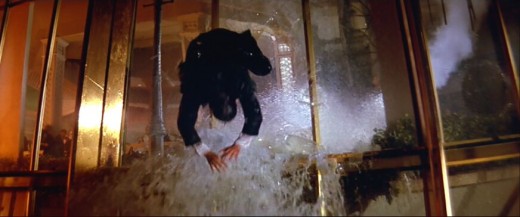
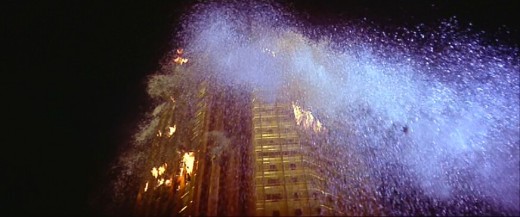
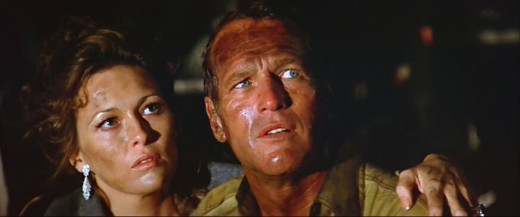
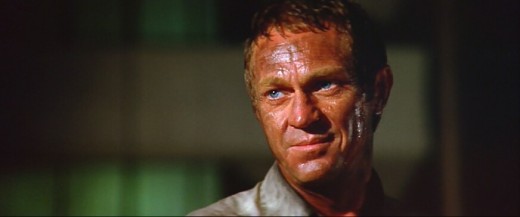
Chief O'Hallorhan: It's out of control, and it's coming your way. You got about fifteen minutes. Now, they wanna try somethin'. They wanna blow those water tanks two floors above you. They think it might kill the fire.
Doug Roberts: How are they gonna get the explosives up here?
Chief O'Hallorhan: Oh, they'll find some dumb son of a bitch to bring it up.
Irwin Allen (1916-1991) produced The Towering Inferno and directed the action scenes. Allen was born in New York City, he was a director back in the 1950’s, his films include The Story of Mankind (1957) and The Lost World (1960), he also created hit TV series Voyage to the Bottom of the Sea (1964-1968), Lost in Space (1965-1968), Time Tunnel (1966-1967) and Land of the Giants (1968-1970).
Director John Guillermin (1925-) was born in London, England, his films include – Tarzan’s Greatest Adventure (1959), The Blue Max (1966), The Bridge at Remagen (1969), Skyjacked (1972), King Kong (1976), Death on the Nile (1978) and Sheena (1984).
Irwin Allen originally wanted Steve McQueen as the architect, Ernest Borgnine as the fire chief, Burt Lancaster as the builder and David Niven as the con man.
The book titles “The Tower” and “The Glass Inferno” were combined to produce the movie title “The Towering Inferno” the name of the building was called “The Glass Tower” and the story set in San Francisco. The film’s screenwriter, Stirling Silliphant, took seven main characters from each of the novels and combined the endings of the two stories.
“The Tower” was set in New York and the fire is started by a terrorist who blows himself up in the basement of the building. At the end of the story some people are rescued by connecting a rope and pulley system between the burning tower and the nearby World Trade Center (North Tower), but only a few are saved the rest die in the blazing inferno.
“The Glass Inferno” is set in an unnamed US city. The fire starts in a storage room on the 17th floor, the fire spreads quickly trapping people in the top floors some are rescued by helicopter. The fire is ultimately put out by blowing up giant water tanks near the roof of the building.
Apparently as part of their contracts Paul Newman and Steve McQueen had exactly the same number of lines of dialogue in the script.
Each star had to have equal billing on the film. Steve McQueen’s name is seen first - left to right and Paul Newman’s is first - top to bottom.
During filming a real fire broke out on one of the sets, Steve McQueen helped firemen put it out. Both stars did most of their own stunts.
Paul Newman’s son Scott appears in the film as a frightened young fireman.
In the film the Glass Tower is 1,652ft high with 138 floors. The lobby and shopping centre is on the 1st floor. Offices are on floors 3-49 and 51 to 80. Residential floors are on 81-120. The Promenade room is on the 135th floor and water tank storage on the 137th floor.
The effects people constructed a 70ft high model of the Glass Tower for some scenes. The model looked especially good lit up in night scenes and when set on fire. In some shots matte paintings were used.
57 sets were built for the film, a record at the time, only 8 sets were still intact at the end of filming. Scenes were shot in the atrium of the Hyatt Regency in San Francisco and its famous glass elevators recreated for key scenes of the movie.
A massive 340ft painted cyclorama of the San Francisco skyline was used for the background of many scenes. This cyclorama can also be spotted in Star Trek II: The Wrath of Khan (1982) outside Admiral Kirk’s apartment window in San Francisco.
Almost a million gallons of water was used for the ending when the water tanks are blown up and the sets are flooded with water.
The famous poster artwork of the burning building was by the late John Berkey, one of the great SF artists.
The scene where Dan Bigelow (Robert Wagner) is running through the room on fire was always cut out or trimmed when shown on British TV but on DVD and Blu-ray the scene and John Williams superb music is thankfully intact.
The Towering Inferno was nominated for 8 Oscars – Best Picture, Best Supporting Actor (Fred Astaire), Best Music (John Williams), Best Art Direction, Best Sound and winning for Best Film Editing, Best Cinematography and Best Song (“We May Never Love Like This Again”).
Won British Academy Awards for Best Supporting Actor (Fred Astaire) and Best Music (John Williams).
The Towering Inferno cost $14m to produce and was a smash hit grossing $139.7m worldwide, one of the most popular movies of the 1970s.
Chief O'Hallorhan: You know we were pretty lucky tonight, body count's less then 200. You know, one of these days, you're gonna kill 10,000 in one of these firetraps, and I'm gonna keep eating smoke and carrying out bodies until someone asks us... how to build them.
Doug Roberts: Ok, I'm asking.
Chief O'Hallorhan: You know where to reach me.
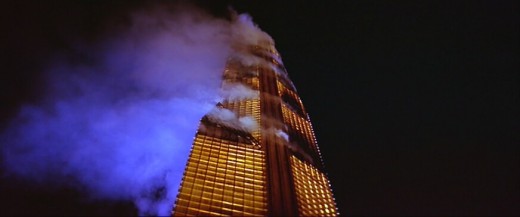
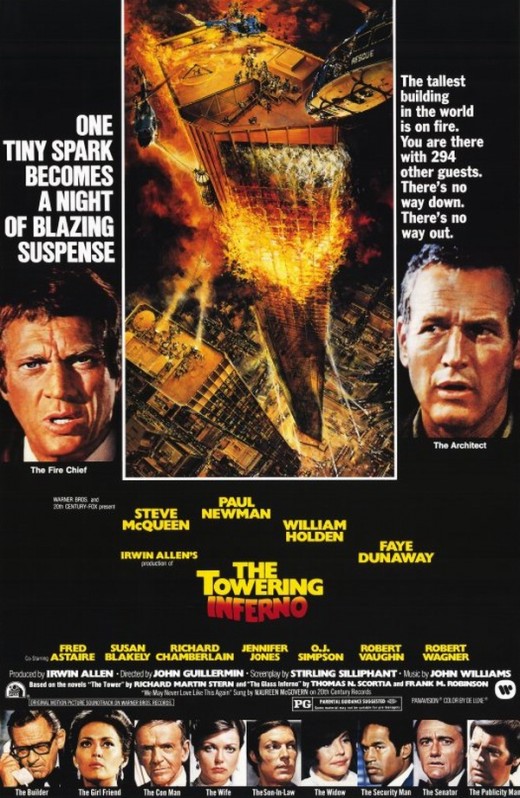
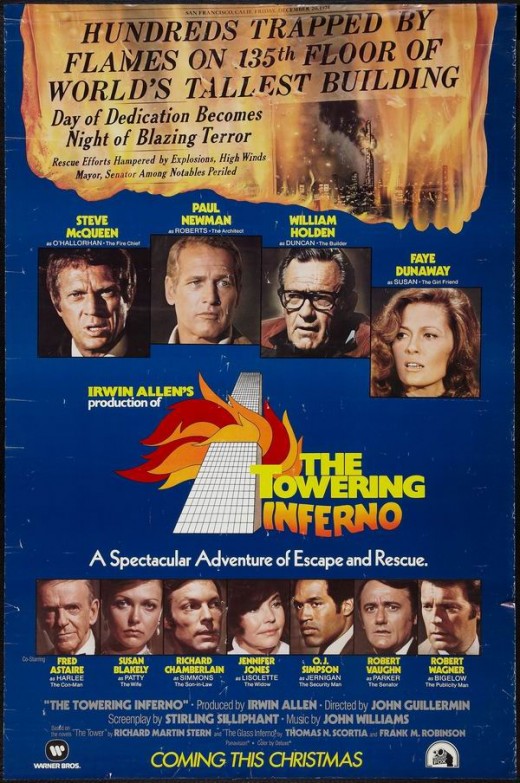
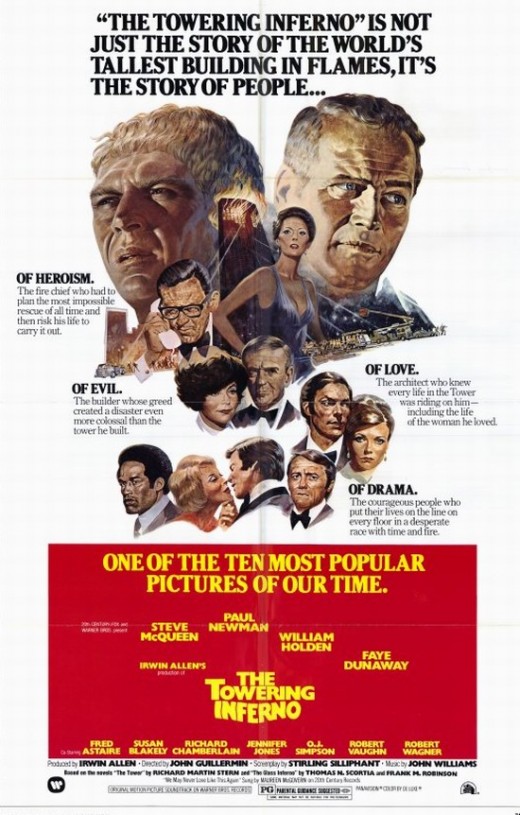
The Critics Wrote –
"The Towering Inferno is a brawny blockbuster of a movie, by far the best of the mid-1970s wave of disaster films. It's an example of Hollywood commercial moviemaking at its finest. It's also a movie to make me happy I don't live in a high-rise; people above the seventh floor should find it thought-provoking." (Roger Ebert)
"If you must have a conflagration-film this is the hell of a good conflagration, the stunts superbly executed, the illusion of a desperate situation brilliantly achieved. In the huge spectacle pity is lost; and I am left reflecting that addiction to Great Disaster cinema is lowering to the sensibilities." (Dilys Powell)
"Each scene of someone horribly in flames is presented as a feat for the audience's delectation." (New Yorker)
"You can tell that a disaster film is achieving its purpose if your palms begin to sweat. Mine did. The special effects boys have done wonders. So let the sweat flow." (Films & Filming)
" As one disaster piled on top of another with astonished realism, my heart was seldom out of my mouth." (Daily Express)
"The Towering Inferno is one of the greatest disaster pictures made, a personal and professional triumph for producer Irwin Allen. The $14 million cost has yielded a truly magnificent production which complements but does not at all overwhelm a thoughtful personal drama."
"The strategy of casting expensive talent pays off handsomely. Steve McQueen, as the fireman in charge of extinguishing the runaway fire in a 130-story building, Paul Newman, as the heroic architect of the glass and concrete pyre, William Holden as its builder, get and deserve their star billing." (Variety)
"At the end of the film, after the last flame has been doused, Paul Newman surveys the ruined hulk of his skyscraper. He suggests allowing it to stand as 'a monument to all the bullshit of our age'. Probably The Towering Inferno should be placed on permanent exhibition at the Smithsonian for the same reason." (Richard Schickel, Time)
